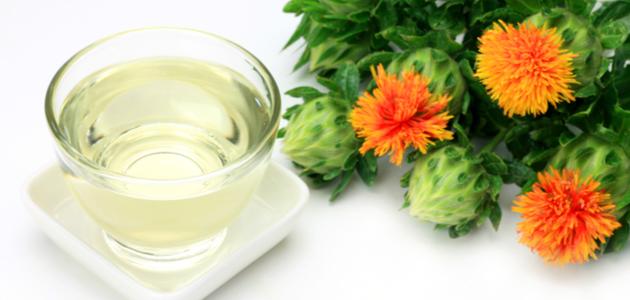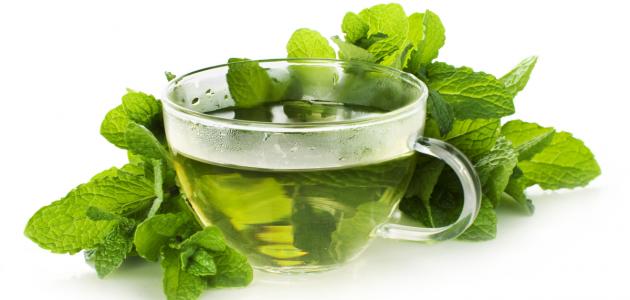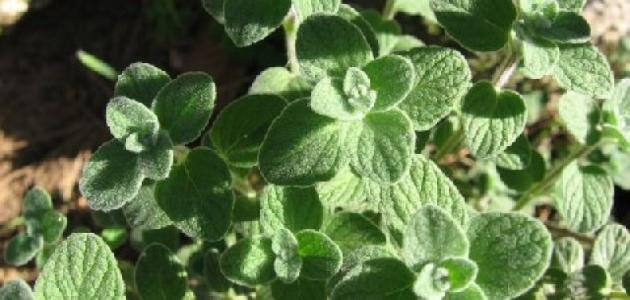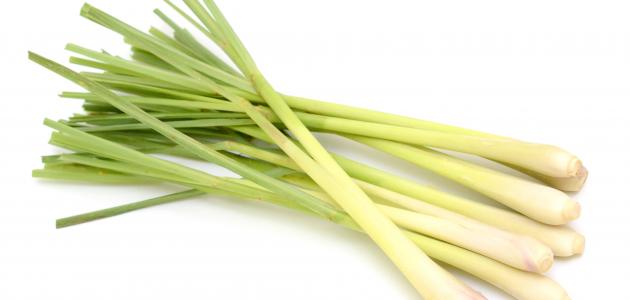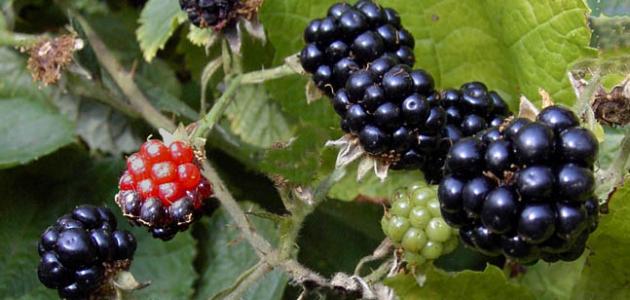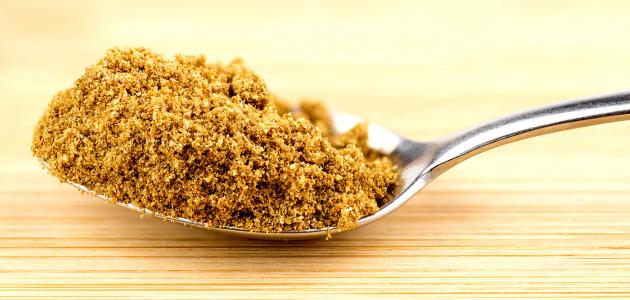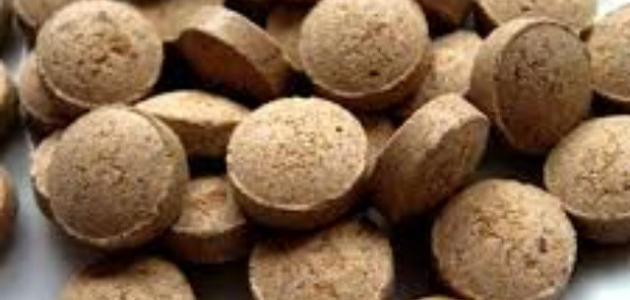Contents
Safflower
Safflower and (scientific name: Carthamus tinctorius L), is a flowering annual herb with many branches of the family Asteraceae (scientific name: Asteraceae), native to the Middle East, but it is widely cultivated throughout Europe , China, India, and the United States, reaching a length of about one meter, with shiny, oval-shaped leaves and spiny edges that wrap around a flat and smooth stem, and produce flowers ranging in colors from yellow to dark red, as well as the strength of their taproot root capable of Growth in dry weather conditions, and it should be noted that safflower has been cultivated since ancient times for its flowers that are used in dyeing fabrics, as a food coloring for foods and in seasoning them, and it has some medicinal uses, and its types differ according to geographical distribution, and the genetic makeup of different races. [1] [2][3]
It should be noted that there are two types of safflower oil: the type that contains polyunsaturated fatty acids in high concentrations, such as: linoleic acid, and the other type that contains monounsaturated fatty acids , as; Oleic acid. [4] Safflower oil is used in manufacturing as a paint solvent, and it is also used to dye cooking utensils to avoid food sticking to them. It is also suitable for many recipes, such as: salads and pickles. [5] [6]
It should be noted that the type that contains monounsaturated fatty acids may be suitable for cooking at high temperatures, such as; A method of frying in which the entire food substance is immersed in hot oils (deep frying), or in which a small amount of oil is placed , because it has a higher burning point higher than other oils , Such as: corn oil , canola oil, olive oil, and the second type; Which contains polyunsaturated fatty acids, it is recommended not to heat it, store it in the refrigerator, and use it only to make vinegar sauces , or to sprinkle steamed vegetables with it, in order to avoid rancidity. [7] [8]
The benefits of safflower according to the degree of effectiveness
The benefits of the safflower plant are concentrated in its oil, including the following:
POSSIBLY EFFECTIVE Probability
- The possibility of reducing cholesterol: where a lot of research suggests that eating safflower oil as a dietary supplement or as a substitute for other oils, contributes to reduce the level of cholesterol total, low density lipoprotein cholesterol , but did not show an effect in lowering triglycerides Or raise the good cholesterol, [9] As it was shown in a small study published in the Journal of Nutritional Science and Vitaminology in 1991 conducted on mice that consumed a high cholesterol diet that phospholipids in safflower inhibited high cholesterol in their blood and liver, and this effect depends on The level of these fats. [10]Another preliminary study published in the journal Plant Foods for Human Nutrition in 1997 on mice that consumed safflower oil with other oils for 28 days showed a decrease in total cholesterol, harmful cholesterol, and triglycerides , in addition to a high level of good cholesterol. [11]
Possibly ineffective (POSSIBLY INEFFECTIVE)
- Improving low birth weight infants: Some research has indicated that adding safflower oil products to infant formula or breast milk does not enhance infant weight gain, nor does it improve the thickness of their skin as an indicator of this. [12]
There is insufficient evidence of its effectiveness (INSUFFICIENT EVIDENCE).
- Suitable for patients with cystic fibrosis: The researchers disagreed about the effect of safflower in patients with cystic fibrosis, but in general research has shown that taking safflower oil by mouth for one year does not improve any of the indicators associated with cystic fibrosis in children or raise its severity. [13] A small study published in the Journal of Pediatrics in 1979 also reported that the consumption of 11 cystic fibrosis patients with essential fatty acid supplementation with safflower oil for a period of one year did not affect sweat test results or rate. [14]
- The possibility of reducing the level of blood sugar in people with diabetes: Research varies on the possibility of safflower reducing the level of blood sugar in people with diabetes, as preliminary research has shown that consuming safflower oil for 3 weeks raises blood sugar levels in patients with type 2 diabetes, but On the other hand, according to the study conducted in 2011, it was found that consuming 8 grams of safflower oil daily for 16 weeks by menopausal women who suffer from type 2 diabetes reduced inflammation, and improved the level of sugar and fats in the blood. They have, and it also reduced the levels of the diabetic hemoglobin test, but without affecting fasting blood sugar levels, and the omega-6 present in it reduces blood sugar levels, while other research indicated that there is no effect of safflower oil on insulin levels or sensitivity. InsulinHowever, taking it orally for 16 weeks reduces HbA1C levels in postmenopausal women. [15] [9]
- But it should be noted that safflower oil may raise the level of sugar in diabetics, which may interfere with the ability to control their blood sugar level, and it may interfere with diabetes medicines: such as: glimepirid, glibenclamide, and insulin, and raise blood sugar levels. Therefore, consuming diabetes drugs that reduce the level of blood sugar with safflower may reduce their effectiveness, and therefore it is recommended to monitor blood sugar levels and see a doctor for the possibility of need to change the dose consumed from them. [13]
- Reducing familial hypercholesterolemia, as some evidence indicated that this effect was observed in safflower oil, as it reduced the level of high cholesterol. It is also believed, according to some other evidence, that consuming safflower oil as an alternative to butter can reduce the level of They have bad cholesterol, but more research is still needed. [12]
- The possibility of relieving hepatitis C virus symptoms: Some research shows that taking a specific product that contains safflower and other substances for three months by mouth reduces the symptoms associated with hepatitis C virus, such as: bloating, nausea, and vomiting, but it does not affect the amount of the hepatitis C virus Hepatitis C found in the body. [9] A review published in the International Journal of Ayurveda and Pharma Research in 2014 stated that safflower seed extract was used as an immune stimulant, and reduced the level of RNA virus or hepatitis C virus in patients with high viral load - or what is known as the amount of viruses in Specific size - but more studies are still needed on the effect of safflower on this virus. [16]
- The possibility of lowering blood pressure in those with high blood pressure: Evidence is conflicting about the effect of safflower oil on lowering blood pressure, as some research indicated that taking safflower oil by mouth for 6 to 8 weeks reduced blood pressure in people with high blood pressure, according to a preliminary study. From Xinjiang Medical University in 1992, it was conducted on mice suffering from high blood pressure that their consumption of a mixture of Chalconoid compounds from safflower extract reduced their blood pressure levels, but it was observed that this effect depends on the system that stabilizes blood pressure levels, or what is called Renin – angiotensin system has disappeared after 5 days of consumption, [17] while other studies indicate that it does not have a good effect in lowering blood pressure. [5]
- The likelihood of an improvement in follicular hyperkeratosis patients: Studies indicate that people with follicular hyperkeratosis eat (Phrynoderma); It is one of the skin disorders because safflower oil containing vitamin E and linoleic acid by mouth for more than 8 weeks may alleviate dry and rough skin . [12] Another preliminary study published in the American Journal of Clinical Nutrition in 1967 stated that follicular hyperkeratosis is associated with a deficiency of essential fatty acids and vitamin B group, and it has been shown that patients' consumption of safflower oil or vitamin B group reduced the acid level that rises in patients. In this case, which is called Trienoic acid, in addition to the high value of the indicator that expresses the low level of essential fatty acids and represents the ratio of Trienoic acid to another acid called Tetraenoic. [18]
- Reducing constipation: as safflower oil has a slight laxative effect in the large intestine, and it contributes to digestion by enhancing the strength of the stomach and intestines, which reduces the occurrence of constipation . [19]
- Reducing the symptoms of premenstrual syndrome: The high content of safflower linoleic acid contributes to the regulation of the level of prostaglandins in the body, which helps to control hormones , and reduce the appearance of symptoms that occur before or during the menstrual period, such as: pain and cramps. [19] It is also believed that the safflower flower contains a compound called honghua, which increases the stability of processes within the body, including those related to the blood circulation in the body, such as: regulating the menstrual cycle. [20]
- Reducing the risk of miscarriage: It is believed that tea made from the leaves of this plant can reduce the risk of miscarriage and infertility among women in Afghanistan and India. [16] On the other hand, consuming safflower by pregnant women is often unsafe, as it can cause the uterus to contract, and potentially increase the risk of miscarriage . [5]
- Other potential benefits: such as; Reducing cases of breathing problems, coughing, fever, pain, and other conditions, but it still needs many studies to prove its effectiveness. [9]
Studies on the benefits of safflower
- A preliminary study published in the Journal of Agricultural and Food Chemistry in 2006 examined the effect of lean safflower seed extract and its content of phenols and serotonin derivatives on mice in which apolipoprotein responsible for fat metabolism is disturbed, which increases the risk of developing one of the types. Hyperlipidemia, and it appeared that the ethyl acetate of safflower seed extract inhibits the oxidation of harmful cholesterol , and this is due to the antioxidant properties that are available in the compound that is found in the two types of serotonin derivatives and called the diabetic part . It reduces their exposure to atherosclerosis . [21]It should be noted that the content of safflower oil in polyunsaturated fatty acids reduces the formation of fatty plaques in the blood vessels, and maintains a healthy heart. [19]
- A study published in the Journal of the American College of Nutrition in 2011 of 85 overweight men aged 45-68 years indicated that consuming a mixture of conjugated linoleic acid or what is known as CLA, which contains safflower oil in a simple way Compared to consuming safflower oil alone , it slightly reduced body weight , but it did not have an effect on vascular disease indicators when fasting or after eating, as well as did not affect other indicators related to metabolic syndrome and oxidative stress, but it slightly improved them, and it is believed that it does not increase the risk of Heart disease [22] [19] It is worth noting that, although safflower oil is classified as healthy fats, eating fats in large quantities, regardless of their source, can negatively affect weight loss.Therefore, it is recommended to consume it in moderation to maintain normal weight, [6] and more evidence is still needed on the effect of safflower oil on fat reduction. [23] It is worth noting that safflower oil and CLA have a role in weight loss. [24]
The nutritional value of safflower
Safflower oil provides the diet with vitamin E , as eating a tablespoon of it provides the body with 23% of the recommended daily amount, and it is believed that this vitamin has benefits in delaying aging, and it may also help reduce the risk of some diseases, such as: heart disease and blood vessels, cataracts lens eye , and diabetes. [6] It is also a source of unsaturated fats, which may contribute to reducing the risk of blood clotting that causes stroke and heart attack, and helps dilate blood vessels, which lowers blood pressure . [8] Each 100 grams of dried safflower seeds contains the following nutrients: [25]
| The food item | Quantity |
|---|---|
| Calories | 517 calories |
| water | 5.62 milliliters |
| Protein | 16.18 grams |
| Total fats | 38.45 grams |
| Carbohydrates | 34.29 grams |
| Monounsaturated fatty acids | 4,848 grams |
| Polyunsaturated fatty acids | 28,223 grams |
| Saturated fatty acids | 3,682 grams |
| Cholesterol | 0 milligrams |
| Calcium | 78 milligrams |
| magnesium | 353 milligrams |
| Potassium | 687 milligrams |
| Folate | 160 micrograms |
| Vitamin A | 50 IU |
| Vitamin B5 | 4.03 milligrams |
As for the nutritional value of safflower oil, 100 grams of it contain the following nutrients: [26]
| The food item | Quantity |
|---|---|
| Calories | 884 calories |
| water | 0 milliliters |
| Protein | 0 gr |
| Total fats | 100 grams |
| Carbohydrates | 0 gr |
| Monounsaturated fatty acids | 14,355 grams |
| Polyunsaturated fatty acids | 74,623 grams |
| Saturated fatty acids | 6.203 grams |
| Cholesterol | 0 milligrams |
| Vitamin E. | 34.1 milligrams |
Cautions associated with safflower
The consumption of safflower oil by mouth is mostly safe for most people, but consuming safflower flower or injecting an emulsion of its oil is potentially safe, and this is only when consulting a doctor, and it was noted that safflower oil may be associated with some caveats when consumed by some groups, including the following: : [5] [8]
- Children: Injecting children with safflower oil emulsion is potentially safe , but this procedure is only performed by a doctor.
- Pregnant and breastfeeding women: Although the consumption of safflower seed oil by a pregnant woman by mouth is potentially safe , it is recommended to avoid consuming safflower flower during this period, as it is often unsafe , as it stimulates the start of the menstrual cycle, but for breastfeeding women there is not enough information about the safety Consuming safflower seed oil or its flowers, and therefore it is advised to avoid consuming them during this period.
- Those who suffer from problems related to bleeding , clotting, and stomach and intestinal ulcers: It is recommended that those suffering from these disorders avoid consuming safflower, as it slows blood clotting.
- Those who are allergic to ragweed and other asterisks: such as chrysanthemums and velvet plants, as the consumption of safflower by those who suffer from allergies to these plants can lead to an allergic reaction, so it is recommended to consult a doctor before consuming it by them.
- People who will undergo surgery: It is recommended to avoid consuming safflower two weeks before undergoing it, because safflower slows blood clotting, which can lead to an increased risk of bleeding during or after surgery.
Drug interactions with safflower
Although few drugs have been documented to interfere with safflower, [1] anti-coagulant and anti-platelet drugs: such as: aspirin , clopidogrel, diclofenac, and ibuprofen, can interfere with safflower, as consumption of a large amount of safflower is associated with the possibility of slowing blood clotting. Thus, consuming this quantity with drugs that slow blood clotting may be associated with an increased risk of bruising and bleeding, and therefore it is advisable to consult a doctor when consuming them together. [13]
References
- ^ A b Drugs.com (3-6-2019), "Safflower" , Www.drugs.com , Retrieved 13-11-2019. Edited.
- ↑ Richard C. Johnson, Theodore Kisha (2012), "Safflower" , www.digitalcommons.unl.edu , Retrieved 11-11-2019. Edited.
- ↑ Li Dajue, Hans-Henning Mündel, "Safflower Safflower Carthamus tinctorius L." , Www.bioversityinternational.org , Retrieved 13-11-2019. Edited.
- ↑ EA Oelke, ES Oplinger, TM Teynor, and others "(13-11-2019), “ Safflower ” , www.hort.purdue.edu , Retrieved 11-11-2019.
- ^ A b t w "Safflower" , Www.medicinenet.com , (17-9-2019), Retrieved 13-11-2019. Edited.
- ^ A b v of Malia Frey (3-11-2019), "OIL Safflower Nutrition Facts Pets Calories, Carbs, And Health Benefits Of Safflower OIL" , Www.verywellfit.com , Retrieved 13-11-2019. Edited.
- ↑ Elea Carey (14-1-2019), “Safflower Oil: A Healthier Cooking Oil” , www.healthline.com , Retrieved 11-11-2019. Edited.
- ^ A b T. Jayne , Leonard (14-1-2019), " for Six : health Benefits Of Safflower Oil" , www.medicalnewstoday.com The , Retrieved 13-11-2019. Edited.
- ^ A b t w "SAFFLOWER" , the www.webmd.com , Retrieved 13-11-2019. Edited.
- ↑ Iwata T1, Hoshi S, Tsutsumi K And Others (12-1991), "Effect of dietary safflower phospholipid on plasma and liver lipids in rats fed a hypercholesterolemic diet." , Journal of Nutritional Science and Vitaminology , Issue 6, Folder 37, Page 591-600. Retrieved 11-11-2019. Edited.
- ↑ T. Sunitha, R. Manorama, C. Rukmini (10-1997), “Lipid profile of rats fed blends of rice bran oil in combination with sunflower and safflower oil” , Plant Foods for Human Nutrition , Issue 3, Folder 51, Page 219--230. Retrieved 11-11-2019. Edited.
- ^ A b t "Safflower" , Www.emedicinehealth.com , 17-9-2019,, Retrieved 13-11-2019. Edited.
- ^ A b t "SAFFLOWER" , Www.rxlist.com , (17-9-2019), Retrieved 13-11-2019. Edited.
- ↑ John Lloyd-Still, Stuart Simon, Hans Wessel and Others (7-1979), “Negative Effects of Oral Fatty Acid Supplementation on Sweat Chloride in Cystic Fibrosis” , Pediatrics , Issue 1, Folder 64, Page 50-52. Retrieved 11-11-2019. Edited.
- ↑ Michelle Asp, Angela Collene, Leigh Norris And Others (2-1-2011), “Time-dependent effects of safflower oil to improve glycemia, inflammation and blood lipids in obese, post-menopausal women with type 2 diabetes: A randomized” , double-masked, crossover study " , Clinical Nutrition , Issue 4, Folder 30, Page 443-449, Retrieved 11-11-2019.
- ^ A b Sanskriti Gautam, Sameer Bhagyawant And Nidhi Srivastava (2014), "DETAILED STUDY ON THERAPEUTIC PROPERTIES, USES AND PHARMACOLOGICAL APPLICATIONS OF SAFFLOWER (CARTHAMUS TINCTORIUS L.)" , International Journal of Ayuroldera 3 and Pharma Research , 2 Page 5-16, Retrieved 13-11-2019. Edited.
- ↑ Liu F, Wei Y, Yang XZ And Others (1992), "Hypotensive effects of safflower yellow in spontaneously hypertensive rats and influence on plasmain activity and angiotensin II level" , Acta Pharmaceutica Sinica , Issue 10, Folder 27, Page 785- 787, Retrieved 13-11-2019. Edited.
- ↑ K. SEETHARAM BHAT And BHAVANI BELAVADY (1-5-1967), “Biochemical Studies in Phrynoderma (Follicular Hyperkeratosis): II. Polyunsaturated Fatty Acids in Plasma and Erythrocytes of Patients Suffering from Phrynoderma” , The American Journal of Clinical Nutrition , Issue 20, Folder 5, Page 386--392, Retrieved 13-11-2019. Edited.
- ^ A b c w Dr. Rachita Narsaria (13-4-2018), "11 Health Benefits of Safflower Oil" , www.medindia.net , Retrieved 11-11-2019. Edited.
- ↑ Gang Zhaoab, Xiang-Wei Zhenga, Yue Gaia And Others (6-7-2009), "Safflower extracts functionally regulate monoamine transporters" , Journal of Ethnopharmacology , Issue 1, Folder 124, Page 116-124, Retrieved 13-11- 2019. Edited.
- ↑ Naoto Koyama, Kanna Kuribayashi, Tetsuya And Others is the Seki (2006), "Serotonin , Derivatives, Major Safflower (Carthamus Tinctorius L . ) Seed Antioxidants, Low-Inhibit the Density lipoprotein ( the LDL) Oxidation And Atherosclerosis In Apolipoprotein E-Deficient Mice" , Journal Unit of Agricultural and Food Chemistry , Issue 14, Folder 54, Page 4970-4976, Retrieved 11-11-2019. Edited.
- ↑ Pfeuffer M, Fielitz K, Laue C And Others, “CLA does not impair endothelial function and decreases body weight as compared with safflower oil in overweight and obese male subjects” , Journal of the American College of Nutrition , 2011, Issue 1, Folder 30 , Page 19-28, Retrieved 13-11-2019. Edited.
- ↑ Jillian Kubala (15-5-2018), "Can the CLA in Safflower Oil Help You Lose Weight?" , Www.healthline.com , Retrieved 13-11-2019. Edited.
- ↑ Ananya Mandal (21-10-2018), “Differences between Safflower Oil and Conjugated Linoleic Acid” , www.news-medical.net , Retrieved 11-13-2019 . Edited.
- ↑ FoodData Central Search Results, “Seeds, safflower seed kernels, dried , ” www.fdc.nal.usda.gov , Retrieved November 13 , 2019 . Edited.
- ↑ FoodData Central Search Results, "Oil, safflower, salad or cooking, linoleic, (over 70%)" , www.fdc.nal.usda.gov , Retrieved 13-11-2019. Edited.
